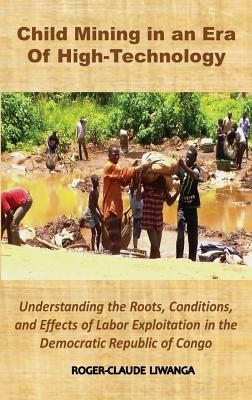
- We will send in 10–14 business days.
- Author: Roger-Claude Liwanga
- Publisher: Alpha Academic Press
- ISBN-10: 099756038X
- ISBN-13: 9780997560381
- Format: 15.6 x 23.4 x 1 cm, hardcover
- Language: English
- SAVE -10% with code: EXTRA
Reviews
Description
This book is about "child labor exploitation." The book argues that mining work is one of the worst forms of child labor because the working conditions in the mines are harmful to the health, safety, education, and development of child miners. It also contends that a combination of factors drives children to work in the artisanal mines in the Democratic Republic of Congo (DRC). These variables include poverty; adult unemployment; lack of educational opportunities; sociocultural conditions; lack of law enforcement; and globalization with its high demand for mined minerals and cheap labor.
The book also alleges that child miners in the DRC contribute significantly in the production of a variety of raw minerals, such as cobalt, coltan, and tin, which are used in the process of fabrication cell phones, computers and other modern electronics. For example, children involved in cobalt mining in the DRC produce about 7.5% of the world's total production of cobalt. The employers and corporations that source minerals from child miners reap high profits while paying children extremely low wages.
The book concludes by suggesting the adoption of a comprehensive approach to eradicate child mining labor in the DRC. This includes the reduction of poverty, the creation of alternative opportunities for child miners, the enforcement of free education in remote mining areas, the prosecution of child labor-exploiters, the traceability of mined minerals, and public awareness-raising on the slavery-like situation of child miners. Some of these strategies have been adopted in countries that previously had a high prevalence of child labor, such as Brazil, Kenya, and the Philippines. As a result, the prevalence of child labor significantly decreased in those countries.
EXTRA 10 % discount with code: EXTRA
The promotion ends in 21d.01:25:02
The discount code is valid when purchasing from 10 €. Discounts do not stack.
- Author: Roger-Claude Liwanga
- Publisher: Alpha Academic Press
- ISBN-10: 099756038X
- ISBN-13: 9780997560381
- Format: 15.6 x 23.4 x 1 cm, hardcover
- Language: English English
This book is about "child labor exploitation." The book argues that mining work is one of the worst forms of child labor because the working conditions in the mines are harmful to the health, safety, education, and development of child miners. It also contends that a combination of factors drives children to work in the artisanal mines in the Democratic Republic of Congo (DRC). These variables include poverty; adult unemployment; lack of educational opportunities; sociocultural conditions; lack of law enforcement; and globalization with its high demand for mined minerals and cheap labor.
The book also alleges that child miners in the DRC contribute significantly in the production of a variety of raw minerals, such as cobalt, coltan, and tin, which are used in the process of fabrication cell phones, computers and other modern electronics. For example, children involved in cobalt mining in the DRC produce about 7.5% of the world's total production of cobalt. The employers and corporations that source minerals from child miners reap high profits while paying children extremely low wages.
The book concludes by suggesting the adoption of a comprehensive approach to eradicate child mining labor in the DRC. This includes the reduction of poverty, the creation of alternative opportunities for child miners, the enforcement of free education in remote mining areas, the prosecution of child labor-exploiters, the traceability of mined minerals, and public awareness-raising on the slavery-like situation of child miners. Some of these strategies have been adopted in countries that previously had a high prevalence of child labor, such as Brazil, Kenya, and the Philippines. As a result, the prevalence of child labor significantly decreased in those countries.


Reviews